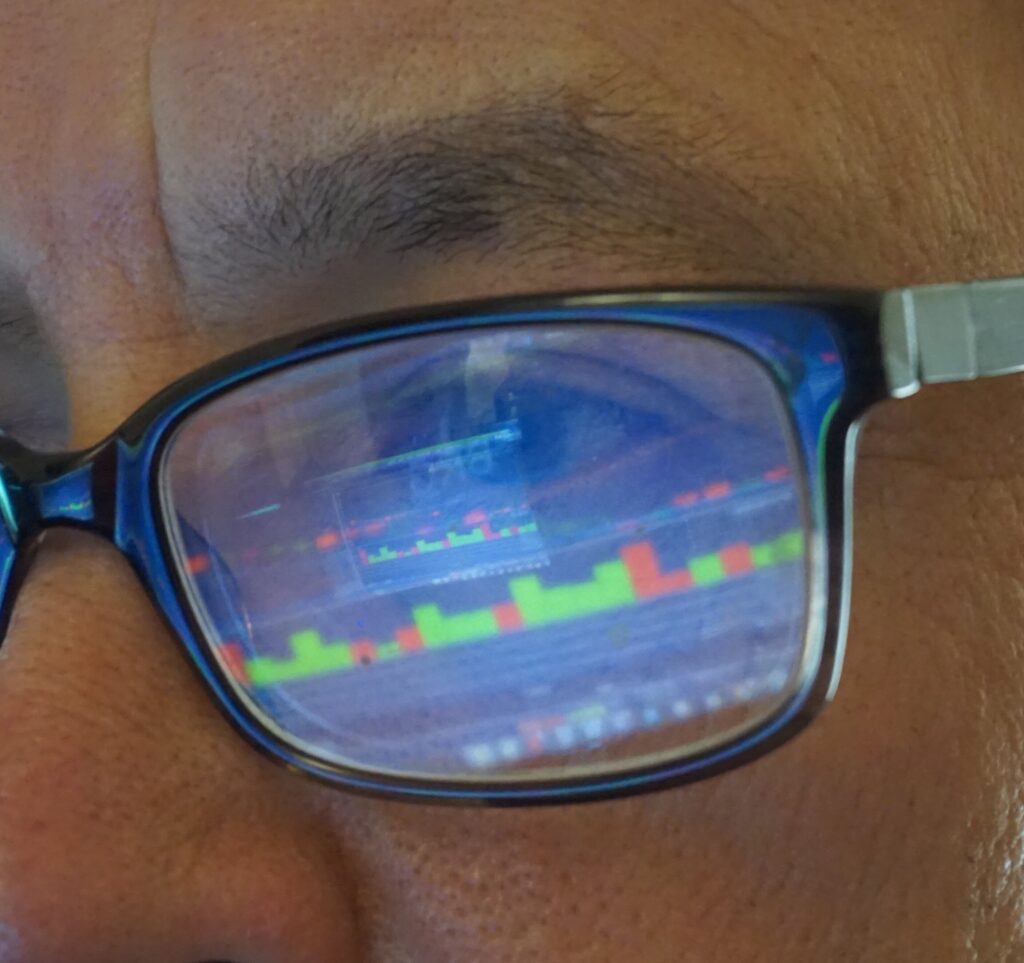The US Securities and Exchange Commission (SEC) could be gearing up to take action against Paxos, one of the leading players in the stablecoin space, which could have significant implications for the $136bn stablecoin market.
Backed by real assets, like cash reserves or bonds, stablecoins have become the backbone of the cryptocurrency market by enabling individuals to trade quickly between various coins, not having to exchange into or out of fiat currencies.
Last week, Paxos was ordered by the New York State financial regulator, the New York Department of Financial Services (NYDFS), to cease issuing BUSD.
Binance USD, or BUSD in short, is a stablecoin pegged to the US dollar. It was created in collaboration with Paxos Trust Company and is backed by US dollars held in reserve at a 1:1 ratio.
BUSD is among the most highly supported trading pairs on the Binance exchange, and users regularly pay for fees and services using BUSD. Besides this, it can also be used for other purposes, like peer-to-peer transactions or purchases from merchants who accept BUSD.
According to an NYDFS spokesperson, Paxos has breached its obligations for “tailored, periodic risk assessments” and due-diligence checks on Binance. In addition, Paxos is being investigated by the SEC for violating investor-protection laws, the company revealed.
As far as BUSD’s exchange-traded volumes are concerned, Binance’s crypto exchange dominates overwhelmingly, despite USDT being the most popular traded pairing on the platform. However, statistics indicate a substantial amount of BUSD has been redeemed in the past week, and its supply has seen a 21.7% decrease during this period.
For instance, when Paxos first announced it was stopping minting new BUSD tokens, $16.1 billion worth of BUSD was in circulation. But today, BUSD’s market cap has fallen to $12.7 bln. Yet, it remains the 3rd largest stablecoin.
USDT is still leading the pack with a market cap of $70.44 billion, accounting for 51.84% of the stablecoin market, according to DeFi Llama. After USDT comes USDC at $41.48 bln, which is followed by DAI, FRAX, and TUSD with a market cap of $5.09 bln, 1.03 bln, and $993.8 bln, respectively.
Targeting Stablecoins or Binance?

The New York-based blockchain infrastructure company has said that the SEC had issued it a notice indicating the regulator was considering recommending an action alleging that BUSD was a security.
Paxos further said that the notice suggested it should register BUSD offerings under the Federal Securities Act. The company, however, “categorically disagreed” with the SEC’s view that BUSD is a security.
As a result, Paxos announced it would cease dealing with Binance on the stablecoin under its branding, effective February 21.
The SEC hasn’t taken any formal action yet. But the crypto market is paying close attention as it could have massive implications for all stablecoins, including Tether (USDT) and USDC, should the agency begin formal proceedings.
Commenting on the question of whether or not BUSD is a security, Binance CEO warned that if the courts decide that BUSD is a security, that would have “profound impacts on how the crypto industry will develop (or not develop) in the jurisdictions where it is ruled as such.”
This action, however, might not be completely targeted at stablecoins. Carol Alexander, a professor of finance at Sussex University, believes that US regulators’ actions are “more a move against Binance” because the exchange has been causing increasing concerns among regulators worldwide on issues from money laundering to securities violations. This may be part of why the SEC has targeted BUSD, she said.
According to a Reuters report last year, the Department of Justice has been investigating Binance for suspected money laundering and sanctions violations, while Bloomberg reported in 2021 that US officials were looking into whether the exchange employees were engaged in insider trading.
Binance Looks Beyond the Dollar

BUSD is the 3rd largest stablecoin and 10th largest cryptocurrency by market cap. Despite that, Binance is quickly turning away from its stablecoin and considering alternative options.
Binance is the largest and most popular cryptocurrency exchange, founded in 2017 by Changpeng Zhao. The trading platform offers a wide range of services, including spot and margin trading, futures trading, and a peer-to-peer marketplace. It also has its own cryptocurrency, Binance Coin (BNB), which can be used to pay for trading fees on the exchange and other services.
With the impending demise of the BUSD, Binance’s chief strategy officer, Patrick Hillmann, stated that multiple private and public entities had expressed interest in working with them on a similar initiative.
The regulatory action, however, did take Binance by surprise. “The BUSD product in our eyes has always been ironclad,” said Hillman. “We haven’t had much time or notice to prepare for this,” he added.
One thing is clear, though, BUSD’s days are numbered. “Along with Ethereum users, there are not going to be users on any chain who would want to be transacting BUSD for that much longer,” said Hillman.
While Binance will continue to support BUSD for the foreseeable future, the exchange is looking to migrate to other stablecoins, especially moving away from using BUSD as the main pair for trading, which will prevent any negative effects of this regulatory action on the platform’s activity.
Last week, Binance CEO CZ tweeted that the company is exploring other issuers and non-USD-based stablecoins, such as Euro, Japanese yen, or Singapore Dollar-based stablecoins. He said that algorithmic stablecoins could also play an important role in the crypto ecosystem going forward.
This, however, might be no easy task since almost all of the notable stablecoins are still tied to the US Dollar. The largest stablecoin not backed by a US dollar is Euro Tether, which according to CoinGecko, only has a meagre $219 million market cap.
However, many believe the current situation provides an opportunity for non-USD stablecoins. Additionally, given the size of Binance, the exchange can certainly make it happen as it is likely to remain a relevant player in the space.
“Given the ongoing regulatory uncertainty in certain markets, we will be reviewing other projects in those jurisdictions to ensure our users are insulated from any undue harm,” CZ said.
Drastic Implications

Despite the enforcement action against BUSD, the crypto market has been enjoying the greens. The reason for this reaction is that the stablecoin is used for trading primarily on Binance, whereas in other parts of the cryptocurrency world, its usage is limited, according to analytics company Kaiko.
“While BUSD is used in DeFi, it is not systemically important to the ecosystem,” said Riyad Carey, a research analyst at Kaiko. BUSD has largely been used in Binance Smart Chain (BSC) ecosystem, which currently has $5 billion in TVL, up from $4.78bln on February 14 but down from $5.35bln on February 8.
Similar thoughts were shared by Vetle Lunde, an analyst at Arcane Research, according to whom, “this is unlikely to represent a critical large structural change to the market, for now.” However, things would be completely different if the enforcement action had been against USDC or USDT. In such a case, there could be “more dramatic implications,” he said.
So, although developments surrounding the Binance stablecoin negatively affected Bitcoin liquidity at Binance, which has fallen almost 30% this month, it has increased trading at competing platforms, with Coinbase’s volume up almost 15%, according to Kaiko.
Binance has been riding high after the FTX collapse, gaining market share and being relatively unaffected by the crypto winter. In January 2023, according to data from CryptoCompare, it was responsible for 55% of global cryptocurrency spot trades.
But the crackdown has certainly taken its toll, with the exchange seeing a net $2bn in asset withdrawals, according to data estimates by Nansen, a blockchain analytics company.
Binance is also rapidly losing ground in the US, with American regulators cracking down on cryptocurrencies in multiple ways. Last month, Binance announced its American banking partner – Signature Bank – will no longer handle US dollar transactions for individuals worth under $100k.
Last Friday, CZ tweeted that Binance had “pulled back on some potential investments, or bids on bankrupt companies in the US for now” but denied removing all U.S.-based tokens from the platform.
As US officials actively and aggressively control the crypto industry, we will likely see more departures. “Like every other blockchain company, we are conducting a careful cost-benefit analysis and will pivot our business as necessary to protect our global user base,” a Binance spokesperson said.
For now, the full impact of the SEC’s investigation is yet to be felt. But if the SEC chooses to pursue an enforcement action against Paxos and bring it to trial for securities law violations, markets may be in for an unprecedented period of volatility.
A lawsuit against BUSD can also result in regulatory scrutiny or enforcement actions against Binance, which can impact the exchange’s operations and potentially lead to fines, penalties, or other legal repercussions. This could further alter the cryptocurrency landscape in the US, as several companies may look to move to a more regulatory-friendly environment.









